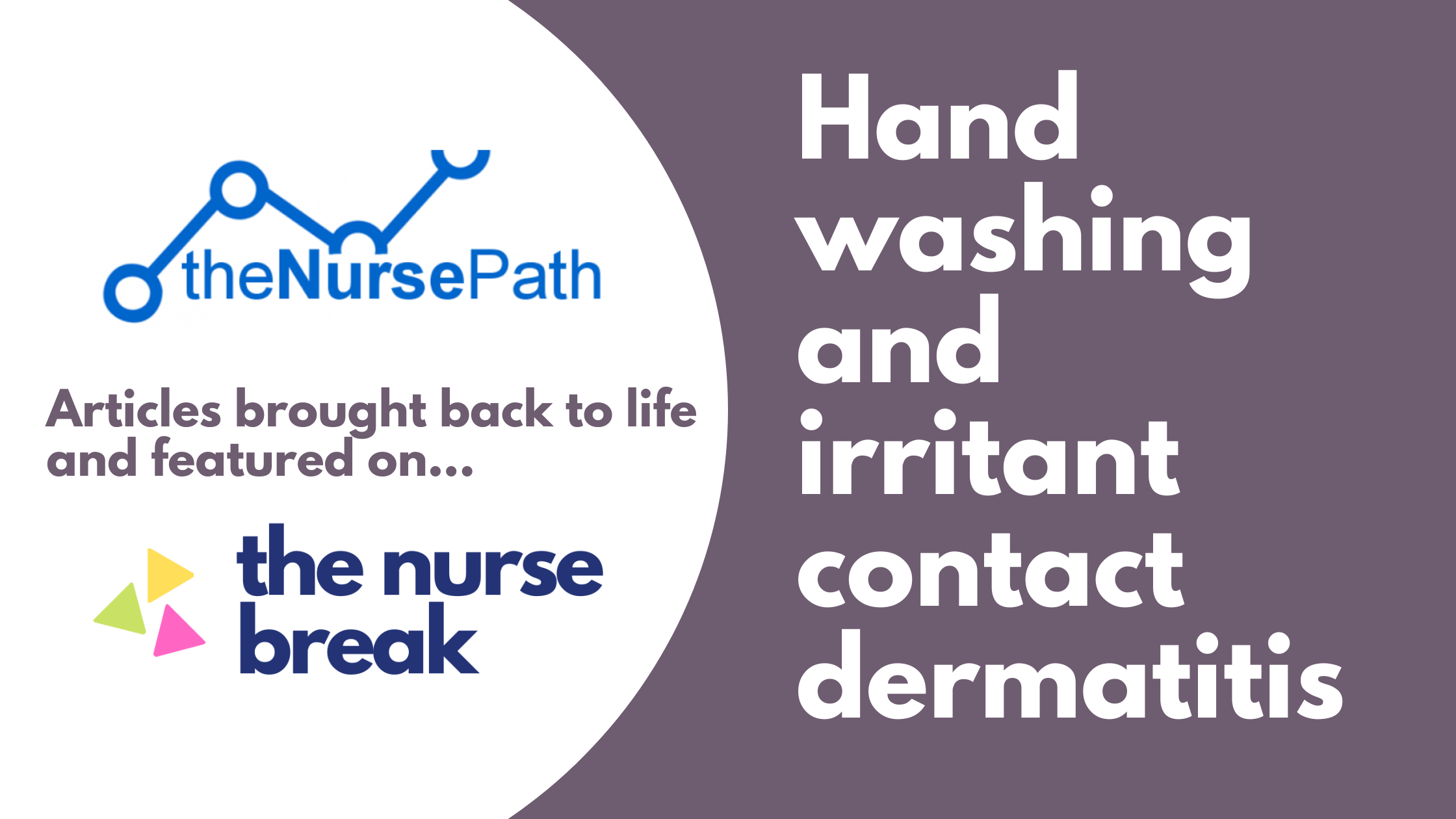Table of Contents
Republished article of The Nurse Path. Find more of The Nurse Path here. Or check out our other articles and guest bloggers here
Perhaps you have seen a colleague enduring the discomfort of red, dry, flaking, cracked hands resulting from constant hand washing at work.
Some reports have estimated that up to 30% of health care workers may be afflicted with this problem, although a recent study of workers in Victoria found cases to be much lower (0.47%).
There are two major types of skin reactions associated with hand hygiene. Irritant contact dermatitis; which includes symptoms that can vary from mild to debilitating, including dryness, irritation, itching, and even cracking and bleeding. The other being allergic contact dermatitis, which is rare and represents an allergy to some ingredient in a hand hygiene product. In its most serious form allergic contact dermatitis may be associated with symptoms of anaphylaxis –Hand Hygiene Australia.
Irritant contact dermatitis is by far the most common cause problems for nurses. It occurs with frequent use of hand hygiene products containing soap or detergents that lead to skin drying.
The situation is exacerbated by frequent use of paper towels, especially if the towels are rubbed against the hands (instead of ‘dabbing’ or ‘patting’ them dry).
Irritant contact dermatitis may be confused with Eczema of the hands (a very common skin condition). Although Eczema may also be exacerbated by frequent hand washing it is an inflammatory response originating from within the body rather than a reaction to an external irritant.
If affected with contact dermatitis, your hands become dry, itchy, red. You may experience a burning sensation or stinging, and eventually your skin begins to flake and crack. Once established it can take many months for the dermatitis to completely clear.
How we get irritant contact dermatitis:
Fragrances and preservatives. Commonly the cause of contact allergies; these should be kept to a minimum or eliminated when selecting an ABHR
Washing hands with soap and water immediately before or after using an ABHR.
Donning gloves while hands are still wet. This is very easy to do inadvertently. Especially when in a hurry.
Using hot water for hand washing.
Not using moisturisers.
Poor quality in paper towels.
Ways to minimise contact dermatitis:
Use hand hygiene products that contain skin emollients. Leads to improvement in dermatitis in approximately 70% of cases.
Use hand hygiene products correctly.
Use correct fitting gloves.
Regular use of skin moisturisers. Oil-containing lotions can be used at least 3 times a shift.
Ointments (which tend to be thicker and more greasy) can be used at home and before bed.
Creams (slightly less greasy) are also good for use outside the work environment.
After washing your hands, don’t forget to dry between your fingers and under any rings.
Prescribed treatments such as topical corticosteroids or antibacterial ointments may be required in severe cases.
Alcohol based hand rubs.
Contact dermatitis due to alcohol based hand rubs is rare and there are no reports of allergic reactions to the alcohol.
References:
- Hand Hygiene Australia – Hand Care Issues [Internet]. [cited 2015 Mar 24]. Available from: http://www.hha.org.au/About/ABHRS/abhr-limitations/hand-care-issues.aspx
- Skin Care – Skin Protection – [Internet]. [cited 2015 Mar 24]. Available from: http://www.occderm.asn.au/skin-care.html





